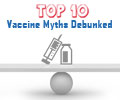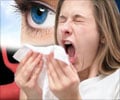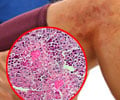A trial involving 200 children in Perth, Melbourne and New York has been launched in the Australian city to create a vaccine for childhood asthma. The trial is based on the process of "desensitization" and consists of placing a daily dose of drops under the tongue.
These drops consist of house dust, grass and cat allergens. The vaccine if developed will be given to children who are at an increased risk for developing asthma. "There's a 12-month treatment period and then we're following the children through until the age of five, so there is a four- to five-year period before we will be absolutely certain that this works," said Professor Peter Sly from the Telethon Institute for Child Health Research in Perth. "If it's successful it will change the way that people look at preventing asthma in the future." He added that such a trial had already been conducted on animals, but not on humans, "This is the first `in-man' trial. And ... if this trial is successful, it won't be the last trial." Most of the families of children taking part in the trial are cautious and worried about side effects, but Professor Sly said that the allergens used in desensitization programs had never given a cause for worry, "Nothing in life is absolutely safe. We can give the best reassurances we can, but in the end we have to do this trial to show that it's both effective and safe," he said. The trial needs about 50 children in Perth and 150 more in Melbourne and New York. It will be expanded to Sweden and Germany later on.Trial To Create Childhood Asthma Vaccine Launched
Recommended Readings
Advertisement











